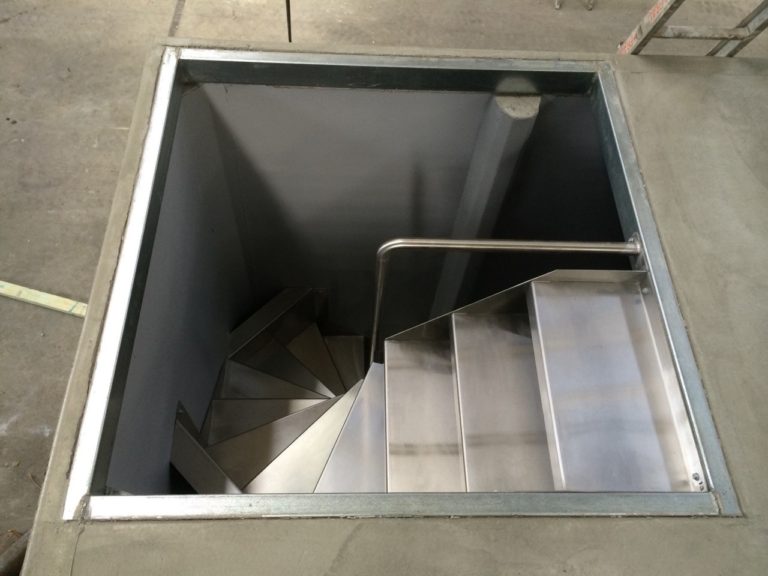Although concrete water storage tanks are one of the best options to choose when installing a water tank, as with any other material, there are some things you need to take care of to ensure you enjoy their benefits for years to come. Since they are underground, detecting cleaning, maintenance, and hygiene issues is often tougher. This is why it is crucial to select a water tank of high quality and do regular maintenance.
Following are some tips for routine maintenance of water tanks:
Watch out for leaks
Minor leaks are unavoidable with the passage of time. Regularly check the tank for leaks so that they can be detected as early as possible. It is easier to fix simple leaks so that problem does not aggravate in the future.
Look out for cracks
The best way to ensure that leaks are detected on time is through regular inspection and monitoring. In case the system has developed a conspicuous drop in water pressure, a sudden emergence of air or rust in the water supply, an unusual increase in the use of water, and loss of water greater than 10%, a leak may be suspected, you must prioritise identifying and solving the issue. Leaks can be caused by structural damage, like in the case of an earthquake in the area.This is why, it is important that when looking for water tanks for sale, you choose the highest quality ones.
Regularly inspect water quality
Water, especially that meant for drinking, must be inspected regularly. Otherwise, contaminants in water would cause issues like an outbreak of Legionnaires disease. Also, clean the tank if it is compromised by plant growth, microbes, silt etc.
Annual cleaning
It is critical to conduct a cleaning of an underground tank at least once a year. The right procedure for cleaning includes chlorination to kill any bacteria that have invaded the tank.
Steps for cleaning
- Switch off and drain the tank away from the water supply
In case there is an external source of water that feeds the tank, it should be switched off prior to starting the process of cleaning. But in the case of rainwater catchment tanks, there will not be any external source of water.
The remaining water in the tank must be emptied prior to cleaning. Since water is a scarce resource, such water should be filled in other barrels. Though not safe for human consumption, it can be used for watering lawns, washing cars, and other similar activities.
- Clean the area of the catchment
For systems of water storage that are cisterns or catchment kinds of tanks, it is important to clean the exteriors which come into contact with rainwater. Bleach combined with soapy water is ideal for scrubbing the exteriors using a stiff brush. After this step, the tank should be rinsed away using clean water.
One must open the access hatch, ideally using a wrench. In case the cleaning process needs a person to climb inside the tank, it is ideal to find professionals who are certified to labour in confined spaces since the levels of oxygen underground are mostly lower.
Persons who wish to go the DIY route to do this must ideally have a helper by their side in case something goes wrong. A flashlight can be used to identify sediments and debris, so keep one at hand.
To clean an underground tank, it is sufficient to use a liquid beach that is unscented and mixed with water. The insides of the tank can be cleaned by scrubbing with a stiff brush. After this work is completed, the tank should be cleansed by rinsing with clean water.
Although you will likely have to use bleach and water again, this step of cleaning must not be neglected since the surface requires scrubbing to get rid of any sediments and biofilms. Following the process of cleaning, the water tank needs to be refilled with potable water.
This should also include a high concentration of liquid bleach for the objective of disinfection. The ideal quantum is a strength of bleach of 5% to 8% for every 370 litres of water. The water-bleach mix should remain in the water for at least 12 hours.
After completion of the step of soaking, the water within the tank must be totally drained. But the bleach in the drained water can damage plants in the garden and so should be emptied into the sewer in the street.
Certain health boards recommend persons refill and drain the tank at least once or thrice to remove the bleach. After all these procedures, water can be supplemented with a minuscule quantum of bleach in order to prevent the growth of microbes.
- Devoting energy and time to maintenance
Every year, the concrete water tanks set up underground must be cleaned thoroughly. After this is completed, regular testing is vital for preventing any infection in the water.
???????
In sum, one must take good care to clean and maintain the underground water storage tanks made of concrete. The good news is that modern technology enables the use of robots for such purposes.





